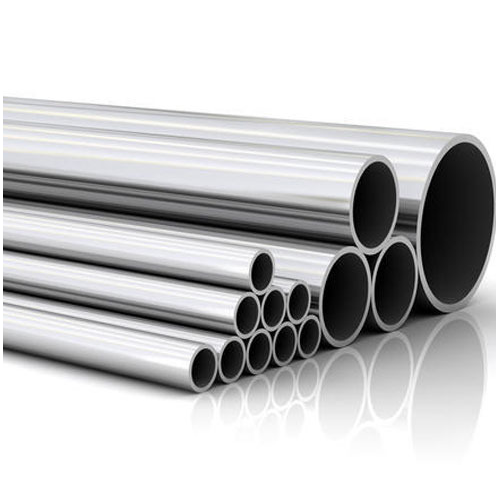Ad Code
Translate
Smart strategies for trading on crypto exchanges
October 20, 2025
Five Do’s For a Healthy Turnover That Bolsters Talent-Retention
October 20, 2025
Discover Honeybee Pharmacy (2025 Guide Important Consumer Tips)
October 14, 2025
What is Ozempic (semaglutide)? (Updated in 2025)
January 30, 2025
How To Find Suitable Properties In Cyprus?
October 20, 2025
Posture Bra: Improving Back Support and Comfort
October 20, 2025
10 Effective Strategies to Improve Domain Authority of Your Website
October 20, 2025
Stainless Steel Pipes & its Applications
Khabza Mkhize
January 21, 2023
Steel is made primarily from an alloy of carbon and iron. Stainless steel is usually a collective term referring to a different class of two-step processes with a maximum carbon content of 2.1%. The feature that makes Stainless steel different is the addition of chromium (Cr) which must be at least 10.5%, and other alloying elements, such as nickel (Ni). However, the exact components and ratios will vary based on the grade required. Steel corrodes because the iron readily combines with oxygen and other elements in nature to form iron oxide and becomes unstable. But when chromium is added to steel, it reacts to form chromium oxide, which protects the surface from rust and creates a corrosion-resistant product.
Stainless Steel Applications
Stainless steel is used in many applications because of its low-maintenance, oxidation resistant and non-reactive nature. Some of the applications are:
- Surgical tools and medical equipment
- Automotive and aerospace
- Architecture, monuments and sculptures
- Kitchen sinks, cutlery and cookware
- Pipes and tubes
Different types of Stainless Steel Piping & Tubing
Sometimes it's pretty difficult to classify pipes and tubes based on their functions. Based on the end-use, we can buy a stainless steel tube and pipe, which are categorized as:
Stainless Steel Pressure Pipe: This pipe is made from a combination of chromium and nickel or solid chromium. It is further classified into -
- Seamless pipe- It can withstand extreme levels of pressure and temperature. Used in a wide variety of different gas and oil applications and mechanical and engineering industries.
- Welded pipe- Because of its flexibility, low cost and lightweight nature, they are generally preferred in industries.
- Electric fusion welded pipe- Used in high-pressure applications
- Large-diameter welded pipe- used in high-temperature applications
Stainless Steel Sanitary Tubing: These are used when stainless steel tubing and piping come into contact with food and other sensitive products, where sanitation is the primary concern. Due to high corrosion resistance and easy-to-clean properties, it's widely used in such applications. The commonly used grade for this application is ASTMA270.
304 stainless steel: As it is highly chemical- and corrosion-resistant, type 304 stainless steel is generally used for tubing and piping applications.
Due to the presence of 0.08 per cent of carbon content, it is prone to carbide precipitation, which makes it non-compatible with applications where temperatures fall between 800- and 1640 degrees Fahrenheit(F). This drawback is overcome by Stainless steel type 304L because of its lower carbon content limit and can be used for welding and higher temperature applications.
Stainless Steel Aircraft Tubing: Chromium and nickel-type stainless steel are used in highly-specific aircraft applications because of their heat and corrosion-resistance properties. It is mainly found in applications that require high strength and low carbon content.
Why Stainless Steel?
- High-quality strength and ductility – Compared to carbon steel and cast-iron pipes, stainless steel has higher mechanical properties. This property helps reduce the pipe's wall thickness and leads to investment cost savings. Gstrength and ductility are also beneficial in terms of security, for example, in an earthquake.
- Corrosion protection – In Stainless steel, an internal and external coating is not required. This makes it more cost-efficient and compatible with the environment.
- Recyclable – Stainless steel can be 100% recycled. Thus, some initial cost is recovered when they are recycled.
- Coefficient of friction –Compared to cement-lined carbon steel pipes or corroded carbon steel, it has a lower variance. Hence, it leads to less loss of water pressure along the pipeline. They are also resistant to high flow rates.
Stainless Steel Pipe Applications
- Fertilizers
- Breweries
- Textile Machinery
- Power Plants
- Chemicals
- Pharmaceuticals
- Construction
- Water treatment facilities
- Dairy and Food Processing
- Stainless Steel in Water Distribution
For the transmission of drinking water, millions of pipelines are used worldwide. To provide hygienic drinking water delivery and long service life, pipelines must offer corrosion resistance to the water itself, treatment chemicals and soil chemistries.
Type 316 (2-3% Mo) stainless steel is the most suitable option for water supply pipelines as it is corrosion-resistant and cost-efficient compared with other piping materials. Duplex Stainless steel (3.0-3.5% Mo) can be used in shoreline installations to achieve the required cost, hygiene, and service life.
Conclusion
Stainless steel pipes are the natural choice when corrosion resistance and low maintenance are required. They are used in many applications and equipment, such as evaporators, automobiles, surface condensers, fluid piping and many more. In many countries, the use of stainless steel is rare, but due to increased government calls, switching from copper to stainless steel would be a huge step.
Featured Post
DL Mining Launches Ethereum Contract Participation Service, Helping Users Earn $2K Stable Daily Returns
Zizo Gala-Mkhize-
October 20, 2025
Soapie Teasers
Sister Sites
Most Popular
List of 6,000+ Dofollow Commentluv Blogs FREE (Updated 2025)
January 16, 2025
Five Do’s For a Healthy Turnover That Bolsters Talent-Retention
October 20, 2025
How To Choose The Right Place For A Winter Campsite
March 06, 2023
Popular posts
List of 6,000+ Dofollow Commentluv Blogs FREE (Updated 2025)
January 16, 2025
Five Do’s For a Healthy Turnover That Bolsters Talent-Retention
October 20, 2025
How To Choose The Right Place For A Winter Campsite
March 06, 2023
Footer Menu Widget
Created By Blogspot Theme | Distributed By Gooyaabi Templates


Social Plugin